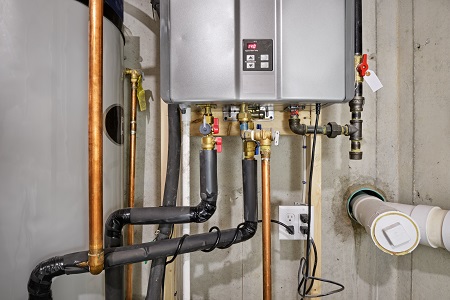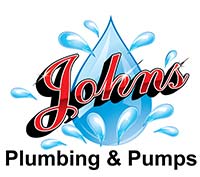You’re tired of waiting for hot water. Imagine having it instantly. That’s what a tankless water heater replacement offers. It’s not magic, it’s technology.
In this article, you’ll master how they work, compare them to traditional heaters, and explore their energy efficiency. Then, you’ll know what to consider before installation.
You’re about to dive deep into the world of plumbing and practical application. Ready to eliminate the wait? Let’s explore tankless water heaters together.
Understanding the Concept of Tankless Water Heaters and How They Work

You’re now delving into the concept of tankless water heaters and how they’re able to provide hot water on demand. Essentially, the unit is a high-power burner. As water travels through a pipe in the unit, an electric element or gas burner warms it up, delivering a constant supply of hot water.
Unlike traditional water storage systems, tankless water heaters don’t store water in a tank. They heat it as it passes through the unit, which is why they’re also referred to as demand-type or instantaneous water heaters. This unique operation makes them a highly energy-efficient option.
Now, let’s get a bit technical. The unit is connected to your plumbing system, and when you turn on a hot water tap, cold water travels through a pipe into the unit. A flow sensor activates the burner, which warms the heat exchanger. The incoming water circulates around the exchanger, rapidly heating to your preset temperature.
This technology ensures that you’re not paying to heat and reheat water in a tank, making it a cost-efficient option. Plus, with a properly sized unit, you’ll never run out of hot water.
Tankless water heaters are a practical, energy-saving solution for your hot water needs.
The Mechanism Behind Instant Hot Water Delivery
In your exploration of instant hot water delivery, you’ll find that a tankless water heater’s ability to heat water on demand is both fascinating and efficient. Unlike traditional water heaters, they don’t store heated water in a tank. Instead, when you turn on a hot water tap, cold water travels through a pipe into the unit, where a gas burner or electric element heats it.
Here’s a deeper dive into its workings. A flow sensor activates the burner when it detects water entering the heater. The combustion gases rapidly heat up a heat exchanger, a device that transfers heat without allowing the combustion gases and water to mix. The cold water then circulates around the exchanger, absorbing the heat, thus delivering hot water instantly to your faucet.
This process eliminates the wait for a storage tank to fill up with enough hot water. However, it’s crucial to size your tankless water heating unit correctly. If the demand exceeds its capacity, you might find yourself in a cold shower. Remember, a unit’s efficiency decreases as the flow rate or temperature rise increases.
Proper maintenance and regular descaling ensure optimal performance.
Comparing Traditional Water Heaters and Tankless Models
While you’re weighing the pros and cons, remember that, unlike a traditional water heater, a tankless model doesn’t store hot water but heats it instantly, which can result in significant energy savings. This on-demand system is your ticket to efficient water heating. It operates by having water flow through a heat exchanger when you turn on the hot water tap. The heat exchanger, powered by electricity or gas, warms the water immediately, supplying it directly to your faucets or appliances.
Contrarily, traditional water heaters continually heat and store water in a tank, regardless of usage, leading to standby heat loss. This inefficiency can hike up your utility bills. Conversely, tankless heaters only consume energy when you need hot water, improving your home’s overall energy efficiency.
However, installing a tankless water heater involves intricate plumbing adjustments. It’s crucial to consider factors like the home’s existing piping system, the heater’s flow rate, and potential retrofitting costs. Despite the initial high cost, the long-term savings and sustainability aspect makes tankless water heaters an increasingly popular choice. It’s a practical solution for your domestic hot water needs.
Energy Efficiency of Tankless Water Heaters
Tankless water heaters, your energy-saving solution, heat water on-demand and not round the clock, so they’re a lot more efficient than traditional models. These systems use a heat exchanger, a device that transfers heat from one source to another. When you turn on the hot water tap, the incoming water circulates through this exchanger, becoming heated to your preset temperature.
In terms of plumbing, installing a tankless heater is a straightforward process. You’ll need a gas or electric line, an input for cold water, and an output for hot water. Remember, tankless heaters require a larger gas line and ventilation system, so it’s not a simple swap with a traditional heater.
Practically, you’ll see instant hot water at your tap and a decrease in energy bills. Unlike traditional models that constantly heat a reservoir of water, tankless heaters only heat water when you need it. They’re significantly more energy efficient, reducing your carbon footprint. So, not only will you enjoy the convenience of instant hot water, but you’ll also be doing your part for the environment.
What to Consider Before Installing a Tankless Water Heater
Before you decide to install a tankless water heater, you should consider factors like gas line requirements, water output limitations, and the cost of annual maintenance.
Tankless heaters are on-demand units that necessitate a significant amount of gas—about 200,000 BTU—to instantly heat water. This is a drastic increase from the 50,000 BTU used by traditional storage tank heaters. You’ll likely need to upgrade your gas line to accommodate this demand, which is an additional cost to consider.
Another factor is the water output. Despite providing unlimited hot water, tankless units have a limited output capacity. If you’re running multiple appliances or showers simultaneously, the system might struggle to keep up. It’s essential to match your household’s hot water demand with a unit’s output capability.
Lastly, don’t forget about annual maintenance. To prevent internal build-up, your tankless heater should be flushed yearly. This maintenance cost should be included in your budget.
John’s Plumbing & Pumps Professionally Installs Tankless Water Heaters
You’ll appreciate the professional installation of tankless water heaters by John’s Plumbing & Pumps. We are not just experts in their field; we are also committed to providing you with top-notch service. Our experienced team knows the ins and outs of all the major brands, assuring the perfect fit for your home or business.
We don’t merely install; we provide you with a comprehensive service that includes a preliminary site visit. This way, we can assess your space and understand your specific needs. When it comes to capacity, we have got you covered. We will ask the right questions to ensure you get a system that’s tailored to your usage requirements.
To give you a clearer picture, here are three key points:
1. John’s Plumbing & Pumps uses top-tier technical skills to ensure that your tankless water heater is installed correctly and efficiently.
2. Our team doesn’t stop at tankless water heater installation. We are always available to answer any questions or concerns you might have about your system.
3. We offer a variety of brands at different price points, guaranteeing you’ll find the perfect efficient water heater to suit your needs and budget.
With John’s Plumbing & Pumps, you’re investing in quality, efficiency, and a commitment to superior service. Contact us for quality installation services. We also offer water heater repair services.

